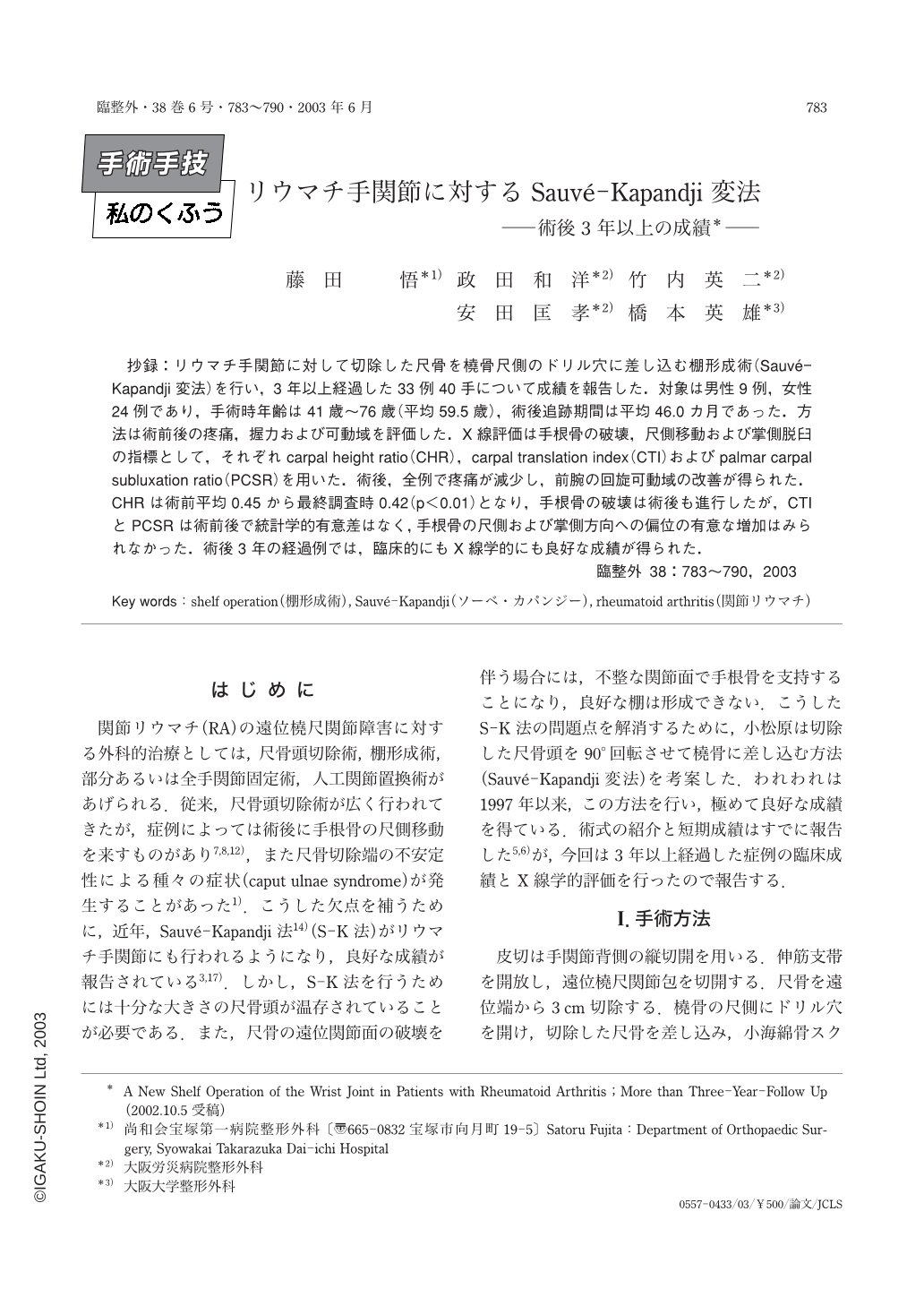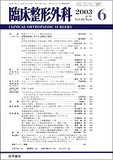Japanese
English
- 有料閲覧
- Abstract 文献概要
- 1ページ目 Look Inside
抄録:リウマチ手関節に対して切除した尺骨を橈骨尺側のドリル穴に差し込む棚形成術(Sauvé-Kapandji変法)を行い,3年以上経過した33例40手について成績を報告した.対象は男性9例,女性24例であり,手術時年齢は41歳~76歳(平均59.5歳),術後追跡期間は平均46.0カ月であった.方法は術前後の疼痛,握力および可動域を評価した.X線評価は手根骨の破壊,尺側移動および掌側脱臼の指標として,それぞれcarpal height ratio(CHR),carpal translation index(CTI)およびpalmar carpal subluxation ratio(PCSR)を用いた.術後,全例で疼痛が減少し,前腕の回旋可動域の改善が得られた.CHRは術前平均0.45から最終調査時0.42(p<0.01)となり,手根骨の破壊は術後も進行したが,CTIとPCSRは術前後で統計学的有意差はなく,手根骨の尺側および掌側方向への偏位の有意な増加はみられなかった.術後3年の経過例では,臨床的にもX線学的にも良好な成績が得られた.
Modified Sauvé-Kapandji procedure was performed for rheumatoid patients. This procedure involved excising the distal ulna and rotating it 90° and then inserting and stabilizing it in a drilled hole at the sigmoid notch of the radius. Forty wrists in 33 patients were treated with this procedure. There were 9males and 24 females. The age at the time of surgery ranged form 41 to 76 years (mean, 59.5 year), and the postoperative follow-up period ranged from 36 to 65months (mean, 46.0 months). The patients were clinically evaluated for wrist pain and range of motion. X-ray evaluation was performed by the carpal height ratio (CHR) used as an index of the destruction of carpal bones, carpal translation index (CTI) used as an index of the ulnar translation of carpal bones, and the palmar carpal subluxation ratio (PCSR) used as an index of the volar dislocation of carpal bones. Wrist pain reduced in all patiets. Mean foream circumflexion increased from 144° before surgery to 167° after surgery (p<0.01). Regarding X-ray evaluation, mean CHR decreased from 0.45 before surgery to 0.42 at the final examination (p<0.01). CTI and PCSR slightly increased after surgery, but the changes of CTI and PCSR were not statistical signficant. The destruction of carpal bones progressd slowly after surgery, but the carpal bones were stable in the ulnar or volar direction. Good clinical resuls were obtained in all cases by Modified Sauvé-Kapandji procedure.

Copyright © 2003, Igaku-Shoin Ltd. All rights reserved.


